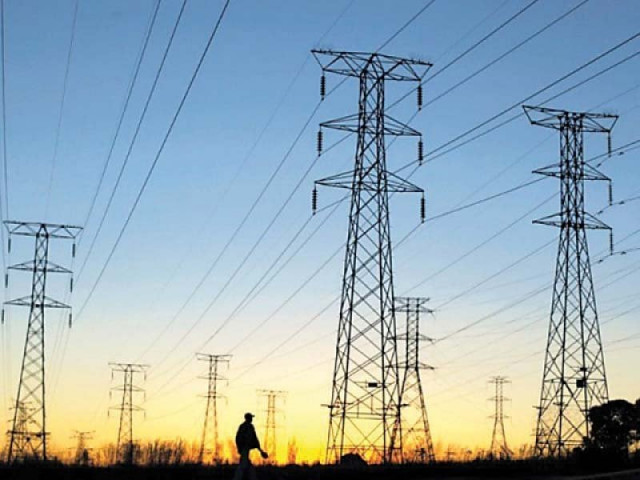Power shortfall reaches over 5,800MW as country sizzles
The country's electricity demand is 24,500MW, but its production currently stands at 18,655MW, according to sources

As the country sweltered under intense heat on Wednesday with mercury already touching the dreaded 45-degree mark in many parts of the country, particularly in Sindh, the power shortfall in the country has reached 5,845 megawatts (MW), resulting in long power outages in rural areas and areas with high line losses.
The country's electricity demand is 24,500 MW. However, its electricity production currently stands at 18,655 MW, said official sources.
Hydropower plants are generating 5,000 MW of electricity, while thermal power plants operated by the government are producing 975 MW.
Private sector power plants are producing 8,350 MW; wind power plants are generating 790 MW; solar power plants are generating 200 MW; bagasse plants 140 MW; and nuclear power plants 3,200 MW.
Read more: Centre asks K-P to take over electricity firms
Due to the shortfall, rural areas are experiencing 6 to 8 hours of load shedding. In urban areas, the load shedding duration has reached 4 to 6 hours, whereas areas with high line losses are experiencing 12 to 14 hours of load shedding.
Minister of Petroleum and Water Resources Senator Dr Musadik Malik stated that in summer, the country's electricity demand reaches up to 35,000 MW, while in winter it drops to 10,000 MW.
"Due to lower electricity prices, higher capacity charges have to be paid, resulting in a circular debt of Rs2.50 trillion, which burdens the economy. Pakistan wants to import gas from Iran but faces difficulties due to sanctions and is striving to obtain concessions similar to other countries."
The minister made these remarks during his address at the Pakistan Energy Symposium 2024, held on Wednesday at a local hotel in collaboration with the Overseas Investors Chamber of Commerce and Industry (OICCI), Shell Pakistan Limited, and Nutshell Group.
The power crisis in Pakistan has been a persistent issue, with frequent load shedding affecting both urban and rural areas. The gap between electricity supply and demand has led to significant disruptions in daily life and economic activities.
Also read: NEPRA mulls another hike despite electricity demand drop
Despite various efforts to increase power generation capacity, challenges such as outdated infrastructure, financial constraints, and regulatory hurdles continue to impede progress.
Efforts to diversify energy sources, including investments in renewable energy projects like wind and solar power, have shown some promise. However, the reliance on imported fuels and the volatility of global energy prices exacerbate the situation.
Addressing the power crisis requires a multifaceted approach, including infrastructure upgrades, financial reforms, and enhanced regulatory frameworks to ensure a reliable and sustainable energy supply for the future.
Meanwhile, Chief Meteorologist, Sardar Sarfraraz on Wednesday has warned that ongoing heatwave in Pakistan persist until the first week of June.
According to a private news channel, Sardar Sarfraaz said that this intense spell of high temperature is expected to grip the nation with the mercury potentially soaring above 50 degrees Celsius in the coming days.
"Pre-monsoon rainfall could begin in the first week of June," the met official said, offering a glimmer of hope for relief.
He further said that this is expected to intensify with day temperatures likely to remain 4 to 6 degrees Celsius above normal in Sindh and Punjab from May 21 to 23 and a further rise of 6 to 8 degrees Celsius from May 23 to 27.
The searing heat is not limited to the southern provinces as Islamabad, Khyber-Pakhtunkhwa, Kashmir, Gilgit-Baltistan and Balochistan are also bracing for temperatures 4 to 6 degrees Celsius above average from May 21 to 27, met official said.



















COMMENTS
Comments are moderated and generally will be posted if they are on-topic and not abusive.
For more information, please see our Comments FAQ